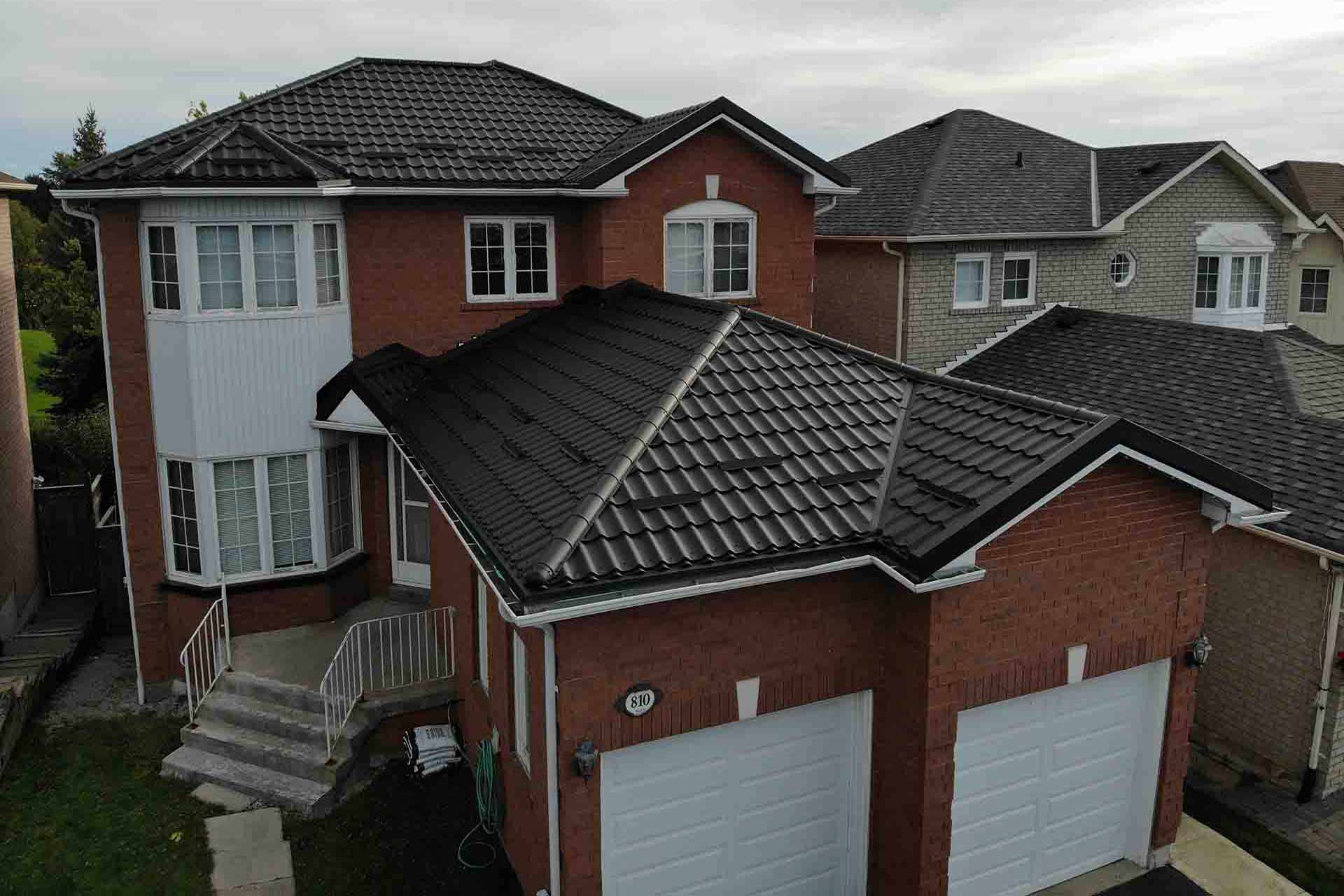As the popularity of metal roofing grows, so do misconceptions about its heat absorption qualities. Metal is a good conductor of heat, which has led many people to assume that metal roofs might be uncomfortable in hot climates. These prevalent beliefs, however, fail to account for technological advances that have made metal roofing more energy efficient than ever before. Despite the numerous benefits of metal roofing, homeowners are frequently flooded with conflicting information concerning its capacity to absorb heat. The misconceptions surrounding metal roofing may be overwhelming, ranging from concerns about noise levels during rainstorms to the possibility of lightning strikes. Here are five common misconceptions concerning metal roofing and heat absorption.
Misconception: All metals are made the same
A material’s thermal conductivity refers to its capacity to conduct heat. Since different metals have different thermal conductivity ratings, they transfer heat at different rates. Copper, for example, has a high thermal conductivity, which means it swiftly and effectively transports heat. Stainless steel, on the other hand, has a reduced thermal conductivity, which means it transmits heat more slowly. When it comes to roofing, the thermal conductivity of the metal utilized can have a considerable influence on the heat absorption and retention properties of the roof. A metal roof composed completely of copper, for example, would be a good heat conductor, absorbing and retaining heat faster than a roof constructed of a metal with poorer thermal conductivity, such as stainless steel. It is important to keep in mind that a metal’s thermal conductivity is not the sole element influencing its heat absorption and retention capabilities. Additional elements that influence how much heat a roof absorbs and holds include the color of the roof, the type of coating or paint used on the surface, and the quantity of insulation present.
Misconception: Heat absorption is always bad
The assumption that high heat conductivity is always bad is not completely right since conductivity is not the only aspect to consider when determining how much heat enters a home. Certain materials, such as asphalt, may collect a lot of heat and slowly release it, adding to the urban heat island effect. A metal roof with strong conductivity, on the other hand, may absorb heat fast while also releasing it swiftly during cooler seasons. The high conductivity of a metal roof at night implies that most of the heat generated during the day will leave quickly, resulting in a cooler interior. In contrast, materials like asphalt may take longer to release the absorbed heat, causing the home to remain warmer at night. As a result, high conductivity is not always a bad thing, especially when considering how rapidly the material can release absorbed heat.
It is important to keep in mind that metal roofing materials are frequently built with insulating layers to decrease heat transmission and avoid excessive heating of a building’s interior. As mentioned , reflecting coatings can be put on metal roofing to reflect the sun’s energy away from the roof and minimize heat absorption. These features can help reduce the impacts of high heat conductivity, making metal roofing a realistic solution for many households.
Misconception: Heat absorption is the most important feature
While heat conductivity is an important component to consider when selecting a roofing material, it is not the most significant factor for determining how much heat a roof absorbs. The amount of radiant heat absorbed by a roof from the sun’s rays is the most significant component to a roof’s heat gains. This can also be referred to as reflecting the sun’s rays from its surface. When it comes to heat gain, metal roofs have a huge advantage over other roofing materials since they reflect radiant energy far better than materials like asphalt shingles. The reflectance of a metal roof is affected by the color of the roof. Darker hues absorb more radiant energy than lighter colors, so homeowners who want to keep their homes cool should choose a metal roof in a lighter color. Overall, while heat conductivity is significant, a roofing material’s reflectivity is vital in decreasing heat absorption and maintaining a cool interior. Homeowners considering a metal roof should examine the color of the roofing material as well as the reflective coatings available to ensure that they select a roof that will keep their home cool and comfortable.
Misconception: There is only the type of metal to think about
Metal roofing can be a fantastic choice for a sturdy and long-lasting roof, as it is not the only material included in the roofing system. A metal roofing system’s components, such as joists, underlayment, and insulation, are frequently built from a range of materials to offer the best performance and protection for the home. The joists that support the metal roof, for example, are typically made of wood, whereas the underlayment can be made of synthetic materials such as polyethylene or polypropylene. Insulation, which is important in limiting heat transmission, can be built of a variety of materials, including fiberglass, cellulose, or spray foam. Proper insulation is critical for preventing heat transfer from the roof to the building’s interior. When a structure is adequately insulated, heat from the metal roof escapes outside rather than within, aiding in the cooling of the interior. As well, effective ventilation can help to regulate heat transfer and prevent excessive heat buildup. As a result, while planning and constructing a roof that can successfully regulate heat transmission and maintain a healthy indoor temperature, it is essential to take into account all components of the roofing system and not only the metal roof cladding. A professional who specializes in installing metal roofing can guide you through this process.
Misconception: Metal roofs are not suitable for cold climates
The idea that metal roofs are unsuited for cold climates is based on the idea that metal is a poor insulator, resulting in considerable heat loss through the roof. While it is true that metal is an excellent conductor of heat, metal roofing may still function effectively in cold areas with sufficient insulation and ventilation.
One technique to reduce heat loss through the roof is to adequately insulate the attic or crawlspace beneath the metal roof. This may be accomplished by placing insulation between the roof rafters, which helps to limit the flow of heat from the building’s interior to the exterior. Insulation can also be put between the metal roofing panels and the roof decking to further limit heat transmission. In cold areas, effective ventilation is usually needed in addition to insulation to avoid moisture buildup in the attic or crawlspace. Moisture buildup can lead to problems like mold growth, which can compromise the structure of the roofing system. Lastly, metal roofing systems are frequently constructed with snow and ice management in mind. Ice dams can also be prevented with a properly installed metal roofing. Snow guards can also be installed on metal roofs to prevent snow and ice from sliding off the roof too rapidly, posing a risk to people and things below.
There are a number of misconceptions about metal roofs and their ability to absorb heat. While metal is an excellent heat conductor, proper insulation, ventilation, and installation may significantly minimize heat loss and enhance energy efficiency in any climate. It also is crucial to note that metal roofs are long-lasting, environmentally friendly, and may allow you to cut down on electricity. If you are considering installing a metal roof on your home, consult with an experienced contractor who can help you pick the correct materials and guarantee that your roof is properly constructed and maintained. With the proper maintenance and attention, a metal roof can be a savvy, long-term investment in the value of your home and the comfort of your family.


